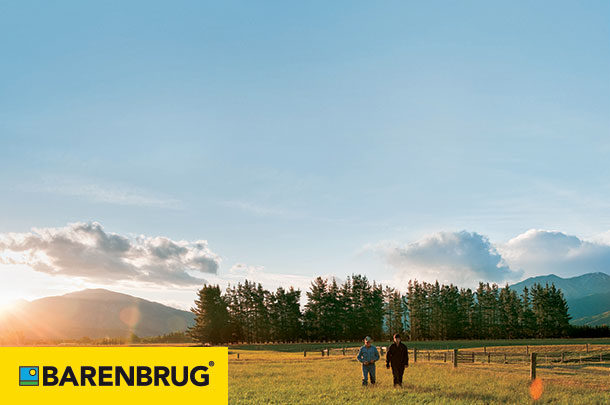Taking advantage of planning opportunities now will set your forage/grazing operation up for success come spring. Here is a list of things you can do now that will help ensure a successful growing and grazing season.
1. Scout your fields and pasture
Finding areas that need attention, and extra management can be difficult during the growing season when everything is green and growing (which tends to cover up trouble spots), and time is short. However, during the dormant season, bare spots and areas where plant spacing is wider than optimal can be easier to spot. Using this time to find trouble spots, assess causes, plan for corrective action, and start to think about managing strategies to both correct the problem and keep it from happening again, pays out measured returns.
2. Take soil samples
Soil sampling is the best way to determine the general health of soil, and what nutrients might be lacking. Doing sampling now will help you get a jump on this ahead of the busy spring season. Note that soil biological lab results can be deceptive when samples are taken ahead of the growing season since it is common for soil biology to slow down during the winter. Nonetheless, samples taken now will give a good indication of nutrient levels, which will help to determine spring fertilizing needs.
3. Make initial grazing plans
Waiting until spring to decide when and where grazing will be initiated is a main ingredient of the recipe for disaster. Sometimes you can get lucky and avoid calamity, however more often than not waiting until spring when your time and attention is stretched thin tends to lead to less strategic, less thought-through decisions, with long-lasting consequences. The good news is that now is a good time to start drafting your initial grazing plan, which should be refined, and adjusted as the grazing season gets closer. At a minimum, use this time to reevaluate what worked (and didn’t work) last grazing season, recall what pasture you turned into first and grazed last so you can defer grazing those pastures, and start thinking through possible pasture rotations, and potential improvements. Ask yourself questions like where were the trouble spots? Where would a cross fence be helpful? where would better livestock water development be helpful etc. Instead of coming up with a plan on the fly at the start of the grazing season, use this time of year to get organized, start thinking through a grazing plan, and generally get ready for a successful grazing season.
4. Analyze infrastructure and equipment needs
As much as we hate to think about it, getting equipment fixed, and ready for spring now is much better than waiting until the day before they are needed. Fixing a fence, or calibrating a seeder aren’t the most enjoyable things on most people's to-do list, however waiting until just before they are needed tends to lead to costly shortcuts and jobs that are patched together instead of done right. Also, now is a good time to get your temporary fencing material organized and ready to go. Even if the work isn’t done now, making a list of things that need your attention, and making plans to get it done is a valuable exercise, and having a plan in place minimizes stress, and helps to set priorities.
5. Plan your seed needs early
Unfortunately, some people don’t think about their seed needs until just before planting, which means they're trying to scrounge up seed at exactly the same time everyone else is, which is stressful for everyone, and leads to frustration. During the busy spring season waiting until just before planting usually means you won’t get the seed you want at the time you want it. When it’s time to plant, it’s time to plant, mother nature waits for no one! Most planting failures can be attributed to a few key factors, planting too late (for example after spring rains, or too close to peak summer heat) is one of the most critical factors leading to planting failure, (planting at the wrong depth, and planting in soil without the necessary fertility, are other common factors leading to failure). Plan your seed needs early, and talk to your seed supplier early so plans can be made early to ensure you have the seed you need when you need it.
Although success often includes a measure of luck, most often success comes from hard work, careful planning, and managing time effectively to allow for proactive and strategic improvement. Spending a little time now to plan for the upcoming critical springtime period, will set up your operation for success during the entire growing/grazing season.








